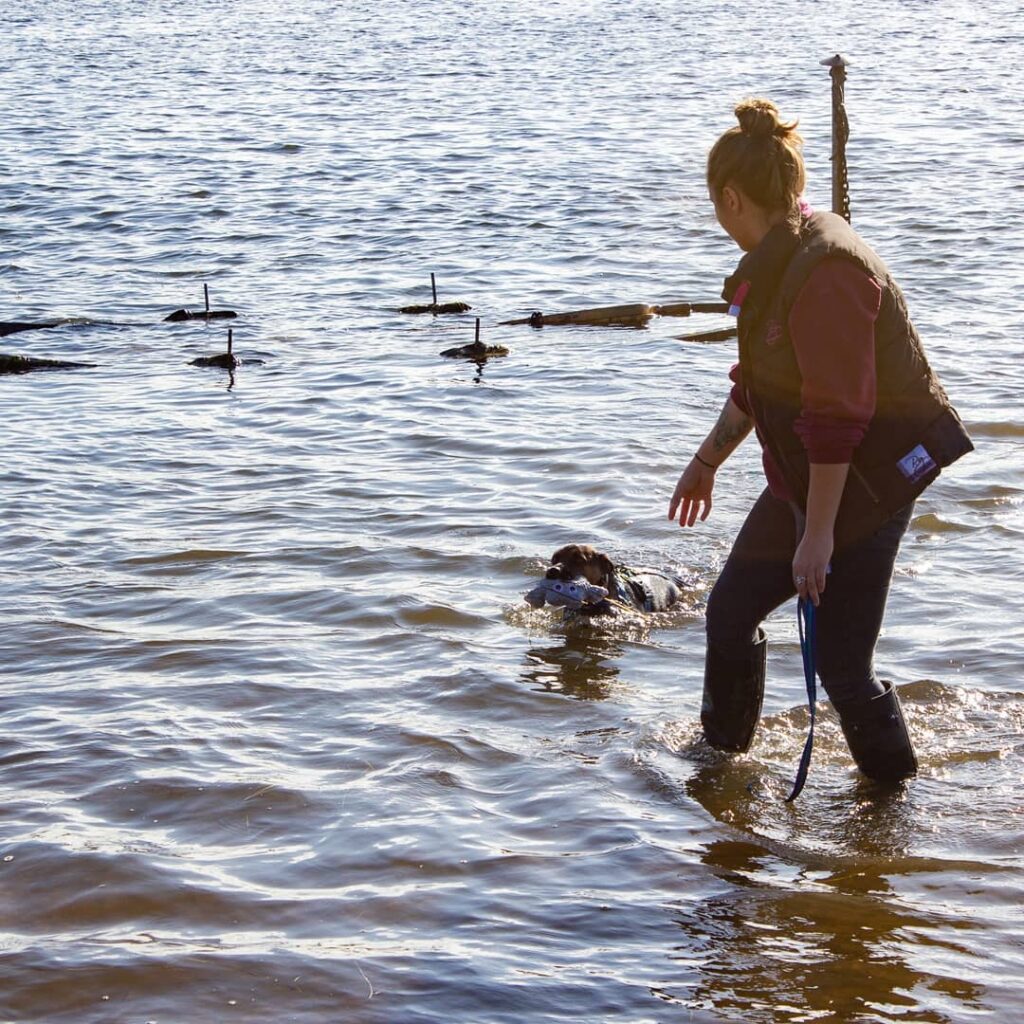In my training journey, I’ve learnt that the more you set dogs up to make the correct choices and reward the hell out of those correct choices, the better a time you’re going to have as the trainer of that dog. For example, back before I was a dog trainer and took Pumba to classes, I was taught to put watch me on cue, to put leave on cue and to use these to keep him focused on me when he was interested in something. This led to a constant barrage of “leave it” and “watch me”s being said to Pumba on a daily basis. He could barely walk down the street without me uttering a million cues to keep his attention on me. One day a trainer told me to shut up and I realised that he was doing the behaviours that I wanted when he felt ready and able to and that I was able to reward them. Once I changed my attitude to forcing these behaviours to happen, which was frustrating when it didn’t occur, to rewarding them when he made appropriate choices, which is enlightening to do because you start to realise how many good choices your dog actually makes, Pumba and I made far more progress than I ever thought would be possible.

Automatic behaviours for traditionally taught cues such as leave and watch me are infinitely more effective than teaching a dog that these behaviours are only rewarded when they’re cued. Firstly, a traditionally trained leave is only effective if you’re there to tell the dog to leave it! What if you don’t see the cat that your dog is running after? What if you don’t notice the poisoned meat on the ground that your dog is about to eat? Your leave it cue is absolutely redundant then because if your dog is going to go for whatever the thing is, you have to be present in order to stop the behaviour. However, building dogs up slowly and teaching them to automatically leave any food on the floor, suddenly you have a dog that will move away from poisoned meat on the ground because his mum always has something better, and a dog that won’t eat a pill that’s fallen off the kitchen counter because she’s been taught that dropped food means an opportunity to be paid for ignoring it. You have a dog you can trust in the dining room with a full table of food whilst you go and answer the door for your guests.
In addition to the above, you don’t get owners nagging at their dogs to leave it or to give them eye contact. You have dogs that know to offer eye contact regularly and whenever a situation changes. I’ve taught Pumba that whenever something new enters our environment out on walks, be that another walker, someone riding a horse, livestock, etc. that he is to turn around and look at me. Ultimately, I plan on turning this into him turning around and running into me to do some heelwork until that new thing passes but for now it’s an incredibly helpful way of ensuring that I’ve got his attention and can keep him an appropriate distance from that new thing or guide him into a different appropriate behaviour for the situation.
Another reason I love this method of training so much is that it’s really likely that if you dog understands what is on offer for leaving something or for looking at you, is physically and mentally able to do it and is able to focus on you, they would be doing that behaviour anyway. If you put your dog in a position where they’re failing, and you have to tell them to leave it or watch you then you’re pushing that behaviour too far too fast. If you have a dog that understands something amazing happens whenever they leave something or look at you, even when there’s something tempting on the floor or something interesting to watch, then why would they not look at you? If they’re not offering this behaviour it’s likely because the environment is too difficult for them to perform that behaviour in, they don’t want what is on offer for performing that behaviour or they don’t understand the behaviour.
Do you have any automatic behaviours or do you need any situations where an automatic behaviour would be helpful? Let me know down below!
